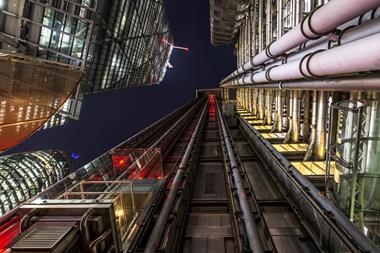Insurers are braced for a surge in subsidence claims after a hot, dry summer, and loss adjusters are facing a skills shortage. Caroline Muspratt reports on their worries
Cast your mind back to July. Temperatures were soaring, hosepipe bans were being implemented and the newspapers were full of pictures of cracked, dry earth that hadn't seen a drop of water in weeks.
While this may have been good news for sun-seekers, the prospect of another long, hot summer was causing the insurance industry to shudder.
The value of subsidence claims increased to £225m last year from £199m in 2004, according to the ABI, even though the actual number of claims fell slightly to 36,900 in 2005 from 37,200 the year before. But that was nothing compared to 2003, when the value of claims reached £300m after a particularly hot and dry summer.
In the UK, July this year was the hottest month on record with the average day and night temperature at 17.8C, according to the Met Office - though August proved to be a bit of a damp squib.
While some people complained that the summer was over before it had really begun, the insurance industry was able to breathe a sigh of relief.
Increase in claims
Garry Lloyd, director of customer services at loss adjuster AMG, recalls that 2003 was a particularly bad year.
"We saw a 500%-600% increase in claims activity," he says. "Earlier this year due to the drought in the South East and the hot summer there was speculation we might see a similar year."
The increased rainfall in August put paid to some of these fears, but since then, there has been another dry spell.
"There may be another flurry of activity into October," says Lloyd. "The site investigations we are doing are still showing the ground is very dessicated - the rainfall is not getting down to that depth," he adds.
Richard Rollit, head of engineering and development in national building services at loss adjuster Crawford & Co, says the rainfall in August stopped the level of subsidence becoming "a real disaster".
But the hot weather in July has still caused an increase in claims.
Catherine Barton, a partner at Deloitte specialising in insurance, agrees that 2006 should not be what insurers class a "major event year". But she warns: "We're not out of the key reporting season yet."
In some ways, the high level of subsidence claims in recent history has helped prepare the insurance industry for the years to come.
"A lot of properties have been underpinned and a lot of trees that have caused damage in the past have been removed, Rollit says. In addition, newly-built houses tend to have "better standards of foundations".
While an increase in subsidence claims brings in more business for loss adjusters, Rollit admits that the company could have difficulty in servicing an increased level of claims.
"There is a limited number of loss adjusters who have the skills to do subsidence claims," he says. "Ultimately we think there is a skills shortage."
Rollit cites the amount of construction work needed ahead of the 2012 Olympics, which has created a huge demand for engineers and surveyors, attracting them away from the rather less glamorous world of subsidence claims.
At the same time, the insurance industry's response to subsidence has changed to cope with the higher level of claims. In the past, the immediate reaction was to "pour concrete under the house and repair the foundations," according to AMG's Lloyd.
"Now we are identifying and dealing with the cause of the problem, for example removing problem trees and fixing leaking drains. The repair methods have become more sophisticated."
He adds: "In the past if we underpinned part of the house, that caused problems in itself, as the rest of the house could move around. Now we try to avoid underpinning unless absolutely necessary."
The industry also has tools which can assess the subsidence risk of a particular property and make sure it is charging the correct premiums.
Royal & SunAlliance, for instance, says its geographical risk assessment (GRA) tool "will ensure that customers in a low risk subsidence area will not be subsidising those in a high risk area."
So will the level of subsidence claims continue to increase? Research into climate change has suggested that summers will become hotter and winters will become wetter, which does suggest that problems with subsidence could grow - and that could have an impact on the price of buildings insurance.
Drier summers
Deloitte's Barton says: "Summers typically have been getting drier, but it's not consistently like that, there has been a lot of variation." As a result, she does not see premiums increasing at a significant rate. "Insurers issue policies on a one-year basis, and are not trying to look beyond that," she points out.
Deloitte's quarterly household report suggests that average buildings insurance premiums are currently at their lowest level for two years.
"We would expect that insurers will review their prices based on the latest claims experience, including in respect of subsidence claims, and adjust their prices where they feel that the current rates are inadequate for the risk."
Peter Ketteringham, household underwriting manager at Norwich Union, says it is too early to fully understand the estimated cost of subsidence this year, although an above average year is "not likely to impact significantly on premiums".
"Individual premiums already reflect the risk of subsidence and our strategy is to take a long term view."
In any case, Lloyd thinks the industry would be able to cope with an increased level of claims.
"Currently there's adequate capacity in the market and the industry is geared to deal with two or three times the normal level of claims," he says.
It is only when the level of claims starts climbing well beyond that level that the industry could face a problem. IT





































